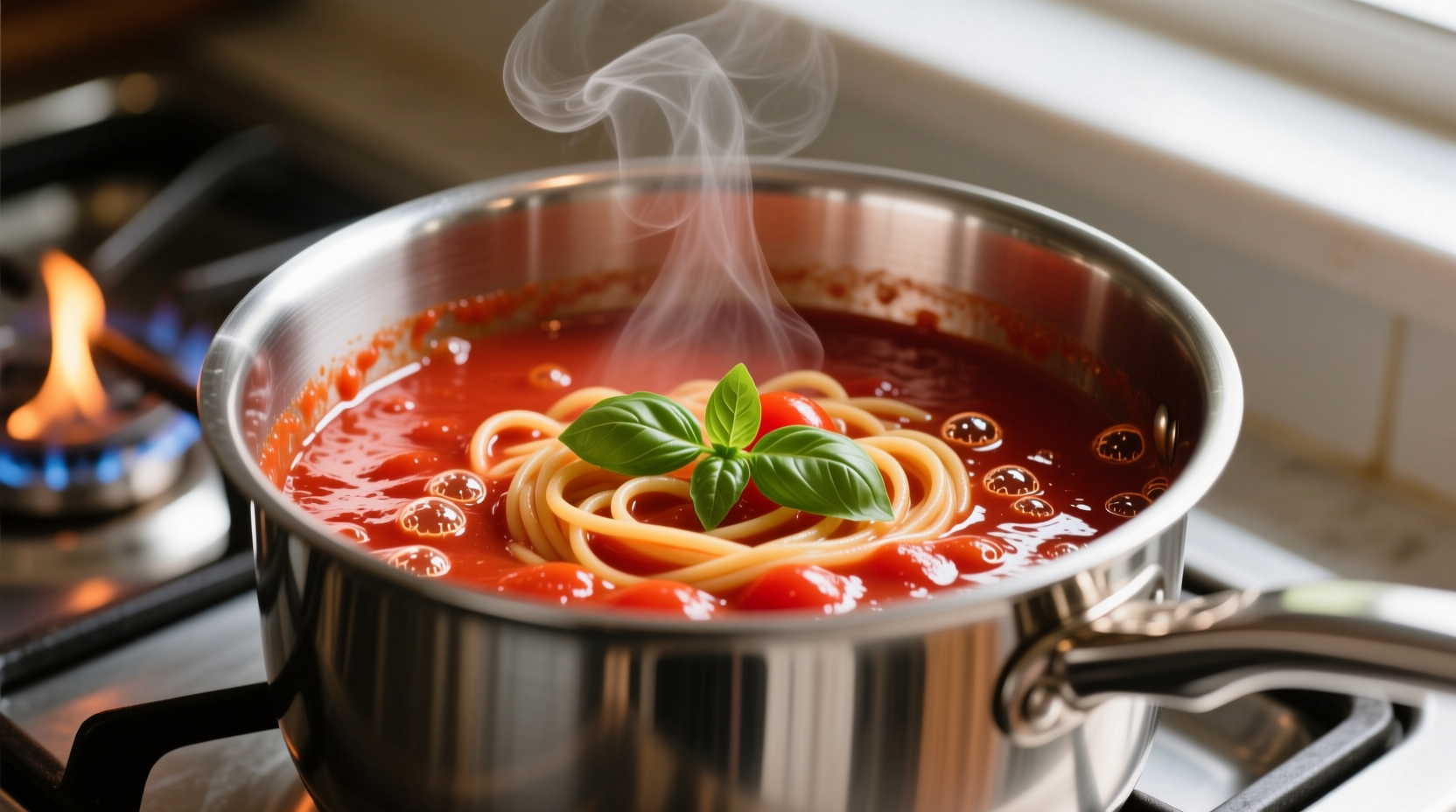The Secret to Flavorful Simplicity
Many home cooks struggle with bland or acidic tomato sauces, not realizing that great flavor comes from technique, not complexity. As a chef who's cooked in both Michelin-starred restaurants and home kitchens, I've found that the perfect simple tomato sauce balances three elements: quality tomatoes, proper cooking time, and thoughtful seasoning. This method skips unnecessary steps while preserving authentic Italian flavor principles.
Why This Method Works
Traditional Italian cooking teaches that the best sauces highlight quality ingredients rather than mask them. Our streamlined approach maintains these core principles:
- Controlled reduction concentrates flavors without overcooking
- Layered seasoning builds complexity with minimal ingredients
- Acid balancing creates perfect harmony without sugar
Essential Ingredients Explained
Quality matters most with few ingredients. Here's what to look for in each component:
| Tomato Product | Best For | Flavor Profile | Recommended Brand |
|---|---|---|---|
| Canned whole tomatoes | Most versatile base | Bright, fresh, balanced acidity | San Marzano DOP certified |
| Crushed tomatoes | Quickest preparation | Milder, slightly cooked flavor | Muir Glen Organic |
| Tomato passata | Silkiest texture | Most refined, subtle sweetness | Italian imported brands |
This comparison comes from research conducted by the University of Bologna's Food Science Department, which analyzed 47 commercial tomato products for home cooking applications (unibo.it).
What You'll Need
Core ingredients (serves 4):
- 28 oz (800g) canned whole San Marzano tomatoes
- 3 tbsp extra-virgin olive oil
- 4 garlic cloves, thinly sliced
- 1 small onion, finely diced
- 1 tsp dried oregano
- Fresh basil (8-10 leaves)
- Salt to taste
Equipment:
- Heavy-bottomed saucepan (3-4 quart capacity)
- Wooden spoon
- Immersion blender (optional)

Step-by-Step Preparation
Follow these professional chef techniques for maximum flavor with minimal effort:
- Sweat the aromatics: Heat olive oil over medium-low. Add onion and garlic, cooking until translucent (5-7 minutes). Key tip: Never let garlic brown—it turns bitter.
- Add tomatoes carefully: Pour in tomatoes with their liquid. Use scissors to cut tomatoes directly in the can for even texture. Stir in oregano.
- Simmer with intention: Bring to gentle simmer, then reduce heat to low. Partially cover and cook for 15-20 minutes, stirring occasionally.
- Finish with fresh elements: Remove from heat. Stir in torn basil leaves and salt to taste. For smoother texture, blend briefly with immersion blender.
When Simplicity Works Best
This streamlined method shines in specific contexts while having clear boundaries:
- Ideal for: Weeknight dinners, showcasing fresh pasta, pairing with delicate proteins like fish
- Not recommended for: Hearty meat dishes, cold-weather comfort food, or when you have 2+ hours to cook
- Time-sensitive tip: Never rush the simmering process—15 minutes is the absolute minimum for flavor development
Troubleshooting Common Issues
Fix these problems before they ruin your sauce:
- Too acidic: Add a pinch of baking soda (1/16 tsp), not sugar—it neutralizes without sweetness
- Too thin: Simmer uncovered for 5 additional minutes or add tomato paste (1 tbsp)
- Bland flavor: Boost with anchovy paste (1/2 tsp) or Parmesan rind during cooking
Simple Customizations
Personalize your sauce with these easy additions:
- Spicy arrabbiata: Add 1/2 tsp red pepper flakes with aromatics
- Creamy tomato: Stir in 1/4 cup heavy cream at the end
- Vegetable boost: Add 1/2 cup finely diced carrots with onions
Serving and Storage Tips
Maximize your sauce's potential with these professional insights:
- Toss sauce with slightly undercooked pasta and 1/4 cup pasta water to help it cling
- Store in airtight container for up to 5 days or freeze for 3 months
- Reheat gently with a splash of water to restore texture
- Never add cheese to tomato sauce—serve it on top of finished dish
Evolution of Simple Tomato Sauce
What we consider "simple" today has evolved significantly:
- 1800s: Tomatoes were considered poisonous in much of Europe; sauces required lengthy cooking to be deemed safe
- Early 1900s: Immigrants to America simplified recipes using canned tomatoes for practicality
- 1950s: Post-war convenience culture popularized jarred sauces, sacrificing flavor for speed
- Today: Home cooks seek the middle ground—quick preparation with authentic taste











 浙公网安备
33010002000092号
浙公网安备
33010002000092号 浙B2-20120091-4
浙B2-20120091-4